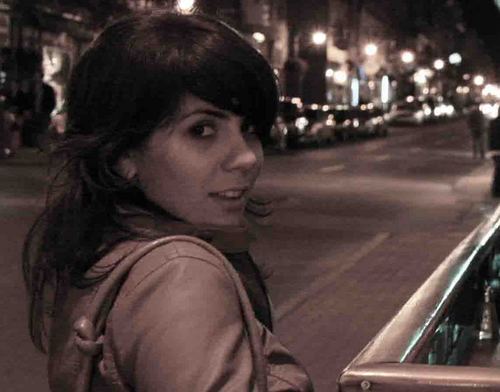Director of Athletics, Recreation and Intramurals leaves to fulfill the position of Assistant Vice President for Athletics Development at Villanova University
George Kolb to
... to be continued
Wednesday, February 18, 2009
Tuesday, February 3, 2009
on language
When I think about the different languages and the all that is lost in translation I visualize chaos. It calms me down to think about it in the bigger picture: even when speak the same language, and we grew up speaking that language, and we are very familiar with all idioms and nuances, we still can't be totally sure if we are speaking the same "language". What I mean by that is that every person has their own meaning for a variety of concepts that we believe are understood by all in the same way. In the clip, she uses "love" as an example. We could use "despair" and still it would be impossible to determine if we are or not talking about the same feeling. Mostly because we use language to communicate our understanding of the meanings we attribute to these words. And I say words because before we give them meaning, they are just these agglomerates of signs (letters) that together make an audiovisual symbol (the word as we read it and say it).
Language has always been an important part of my life, but until I watched Waking Life (this excerpt), I had never thought about it the way I do now, as a flawed system. In a way, it's sad because it exposes our inability to communicate successfully and predicts a world of no real connections, where all that is said, written, acted is simply an attempt to say, write, act the idea we have deep in our minds. However, just like we can't be sure we all disagree on what love or happiness or guilt are, we don't know if our rough tries aren't successful either. We'll never know.
Language has always been an important part of my life, but until I watched Waking Life (this excerpt), I had never thought about it the way I do now, as a flawed system. In a way, it's sad because it exposes our inability to communicate successfully and predicts a world of no real connections, where all that is said, written, acted is simply an attempt to say, write, act the idea we have deep in our minds. However, just like we can't be sure we all disagree on what love or happiness or guilt are, we don't know if our rough tries aren't successful either. We'll never know.
Sunday, February 1, 2009
regarding others
It was only after I left the classroom on Friday that I realized why I had one of Goya's The Disaster of War drawings stuck in my head. In Regarding the Pain of Others, Susan Sontag uses that collection as an example of a representation of human atrocities.
Not so much of Diane Arbus - a long time favorite of mine - , but the NPPA photographs struck me as excellent portraits of human suffering. Then something clicked and I thought "of course, Sontag!".
So what do those photographs mean? What is their purpose?
Sontag says that the meaning of a photograph is "never to be found in the photographer's intentions but in the desires society brings to it and the uses that society puts it to". Images can only talk for themselves so much, and it's the viewer, who is interpreting them, that adds meaning and purpose.
She adds that these images (of war, conflict, suffering) increase the awareness of war, but, contradictorily, that images contribute to our "callousness" because of their repeated exposure. Seeing the degree of violence in the front might be eye-opening, but it's also harmful in the sense that it can numb our senses to that kind of exposure.
In Living Life Trying, David Hogsholt's lenses captured Mia's dichotomous life of pain and pleasure so well it touched me like Eddie Adams' photograph of the National police chief Nguyen Ngoc Loan executing a suspected Viet Cong member. It might be just me, but violence that isn't physical numbs us much more than what's explicit.
Not so much of Diane Arbus - a long time favorite of mine - , but the NPPA photographs struck me as excellent portraits of human suffering. Then something clicked and I thought "of course, Sontag!".
So what do those photographs mean? What is their purpose?
Sontag says that the meaning of a photograph is "never to be found in the photographer's intentions but in the desires society brings to it and the uses that society puts it to". Images can only talk for themselves so much, and it's the viewer, who is interpreting them, that adds meaning and purpose.
She adds that these images (of war, conflict, suffering) increase the awareness of war, but, contradictorily, that images contribute to our "callousness" because of their repeated exposure. Seeing the degree of violence in the front might be eye-opening, but it's also harmful in the sense that it can numb our senses to that kind of exposure.
In Living Life Trying, David Hogsholt's lenses captured Mia's dichotomous life of pain and pleasure so well it touched me like Eddie Adams' photograph of the National police chief Nguyen Ngoc Loan executing a suspected Viet Cong member. It might be just me, but violence that isn't physical numbs us much more than what's explicit.
Subscribe to:
Comments (Atom)
